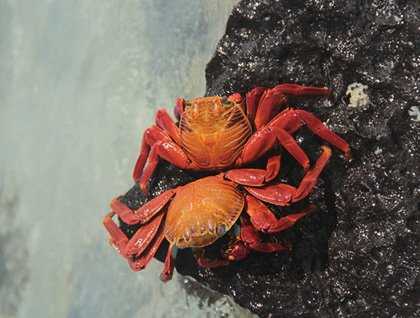We had a great start to our expedition in Galapagos on Española Island! This island is situated in the farthest eastern site of the archipelago, and it is the oldest island of all. Many of the species that live on this island are endemic to Española, meaning they are found here and nowhere else.
We started with a very early kayak at Gardner Bay. Our explorers enjoyed of this activity in turquoise and clear waters before breakfast. We had a delightful time.
The rest of the morning we swam and walked on the beach, and some of us went snorkeling in Gardner Islet. This bay is home for several hundred sea lions, so we spent a great time with them on land and in the water. And this was just the morning; the best was still to come.
Punta Suarez is a highlight for wildlife. Different species of sea birds nest along our trail, such as blue-footed boobies and Nazca boobies. Reptiles are well-represented as well - the marine iguanas are the most colorful on the islands and the lava lizards here are the largest of the archipelago! We even got to spot an elusive snake as he headed away from our trail.
But the icing on the cake were the waved albatrosses. These birds come to nest on Española during our cold season. Right now the season is changing, so they are getting ready to move along. Their chicks must grow fast to be able to abandon the island during the hot season. We enjoyed their calls and their funny movements while walking to the cliff, and then we marveled at the sight of their majestic flight!
From playful sea lions to unique lava lizards, from charismatic blue-footed boobies to elegant waved albatrosses —what a way to start our expedition!









